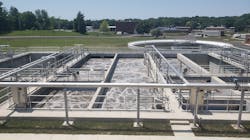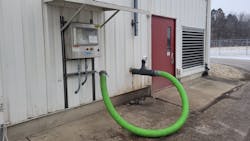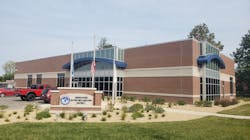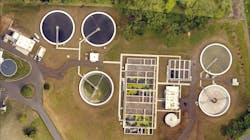Reasonable payback on new capital equipment often has a long range. For some, the return on investment (ROI) hits after three years while others do not see that return until five years after installation.
At the Kishwaukee Water Reclamation District (KWRD) in Illinois, however, ROI was discovered in just 14 months. This utility, with its net zero energy plan and biogas plant, could be described as a blueprint for future treatment plants.
It is totally committed to being an exemplary environmental steward, and believes in “Clean the Kish,” an environmental sentiment regarding the Kishwaukee River, known locally as The Kish. The 63.4-mile-long stretch of water derives its name from the Native American Potowatomi word for River of the Sycamore, and recovering resources to protect public health at KWRD is a fundamental ongoing aim. In fact, it is considered a necessity to achieve it in the best possible and economically viable way for the 50,000 people it serves.
Kishwaukee’s clean green renewable energy, nutrient-rich biosolids and eight acres of native prairies encourage butterflies while enhancing the beauty of the area. While those elements all have a positive perception, the opposite is true about septage.
Far enough out of Greater Chicago — close to agricultural land and homes with septic tanks — KWRD realized that its location was advantageous for septage collection, and that there was a gap in the market. This was confirmed by an approach from a septic hauling firm that was looking for a receiving station.
In 2012, KWRD in Dekalb, Illinois (65 miles from Chicago) began taking in septage, which was dumped into a manhole on-site that combined with the main influent flow. Word soon spread and, by offering competitive rates of $0.035/gallon, septage fees were stacking up fast. The plant took in 442,000 gallons of septage in the first year alone. As more and more haulers from around a 50-mile radius chose Dekalb as their unloading site, the treatment plant had to deal with volumes that rose to 704,000 gallons in 2013, all the way up to 2.6 million gallons in 2016.
“Creating regular revenue towards the overall running of our facility has been extremely useful,” said Mike Holland, Asst. District Manager at Kishwaukee Water Reclamation District, “but by its very nature, septage presents challenges. So, with an increasing amount of debris, our screens would become blinded and needed cleaning manually. This meant more labor and also more man-hours of troubleshooting, because the flows could mess with our controls. We finally reached a point where we needed to screen the septage separately and have more control.”
In 2017, Mike and his colleagues considered a new single screen system, specifically designed for the handling of septage.
“We looked at some different manufacturers, including Lakeside Equipment Corp., who we’d always heard very positive reports,” Holland said. “We went to visit two of their plants to see for ourselves, and it was more about what we didn’t hear. None of the operators talked about problems – just that the equipment was very easy to maintain, clearly built to last and didn’t involve much time to manage it.”
Holland said KWRD also sought advice from LAI, a manufacturer’s representative firm based in Rolling Meadows. LAI serves water, wastewater and stormwater markets and had previously purchased Lakeside Equipment Corp. equipment.
After careful consideration, KWRD chose Lakeside Equipment’s Septage Acceptance Plant (SAP), a small-footprint, pre-engineered, self-contained, fully automated unit with a full-penetration rake-head that removes debris and inorganic solids that typically pass through a conventional bar screen. To pre-treat septage, the SAP is anchored by a heavy-duty Raptor Fine Screen. The system prevents damage to downstream equipment and decreases in equipment and process effectiveness by capturing the debris from the septage.
“We have around 15 septic haulers that use our facility,” Holland said. “Our intake now exceeds four million gallons per year but, apart from having to clean out the SAP’s rock trap once per week, the Lakeside system takes care of everything — and we also know exactly which haulers have come in, at what time, and how much they have dumped.”
Payback in 14 months
Holland said the screen has allowed KWRD to maintain an important revenue source, noting the return on investment for the wastewater screen was faster than anticipated.
“Taking in septage has become a significant revenue stream for us, keeping wastewater treatment costs down for our citizens,” Holland said. “Daily, around five to 10 vehicles visit us during our main hours, each depositing about 3,500 gallons per time. The access code makes everything easy. Payback of just 14 months far exceeded our expectations.”
About the Author
Chris French
Chris French is a freelance writer on water, environment and renewable energy issues. French can be reached at [email protected].



